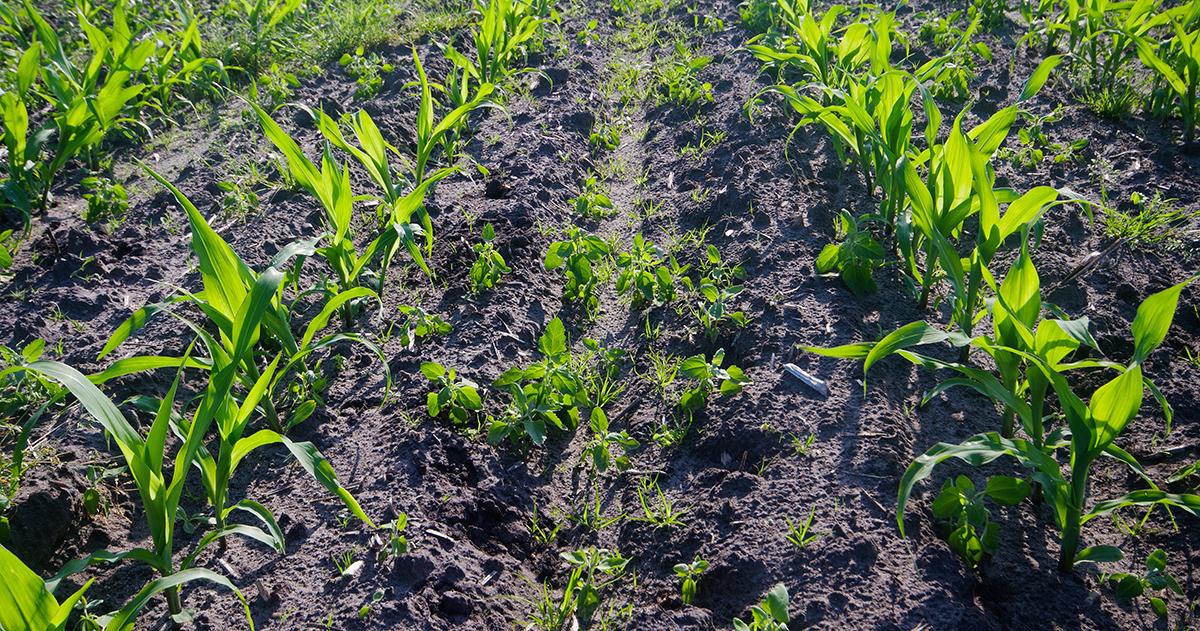Weed management in crops and pastures after flooding
After flooding or widespread water inundation, weed spread and establishment in crops and pasture will be a risk for landholders. Weeds can thrive in pasture and crops through lack of competition from desirable plants due to water damage, while access to paddocks can also hinder the ability to identify weeds in a timely manner and apply control methods.
Weed populations will deplete soil moisture and can create a green bridge for crop pests and diseases, like cereal rusts, potentially causing an epidemic in the new season. If allowed to set seed, there becomes an ongoing seedbank population, which will germinate under the right conditions and require ongoing management.

What is a green bridge for crop pests and diseases?
A ‘green bridge’ refers to weeds and crop volunteers that serve disease and insect pests by providing a habitat to survive on from one cropping season to the next. This vegetation can grow in the paddock, alongside fence lines, headlands, roadsides and non-crop land.
Green bridges can be germinated seed from the previous crop, local weeds germinating from summer rainfall or germinating weeds blown in from nearby areas. Grasses and broadleaf weeds are both significant, however particular pest species are known to have preferred hosts to use as green bridges over the summer.
It takes a community effort to control green bridges, as rust spores, aphids and mites all travel on the wind, easily crossing farm boundaries. Ideal timing for control, so as to interrupt the life cycles of a number of pests, is at least 2-3 weeks before sowing begins.
Common ways weeds are spread in pasture and crops after flooding
- seed spread in waterways
- in organic material transferred in flood waters
- soil seed banks with the moisture for germination post-flooding
- transfer of seeds in purchased fodder
- in mud and soil attached to vehicles.
You can expect to see common weeds for your region, however, also be on the lookout for new weeds which may establish quickly. Ongoing monitoring will be required to determine:
- weed species ID
- establishment pattern or spread
- management plan for control and prevention of further infestations and seedbank build-up.
What can you do to control weeds after flood?
- Maintaining groundcover, increasing plant competition when possible and applying other management strategies such as chemical application, manual removal or fallow management may all assist with reducing weeds. Seek professional advice relating to management strategies, herbicide options and spray rates as required. Always follow label instructions and ensure appropriate records are kept.
- Monitor areas inundated by flood water for the next 12 months at least. Some weeds may not be visible until a year or 2 after the flood. If you find weeds that you don’t know what they are, get help with identification early before they spread further.
- Weed seeds can easily attach to vehicles and equipment in the muddy conditions after a flood. Ensure that vehicles and equipment, including those of contractors and advisors, are clean and free of weeds before entering or leaving your property. Consider providing a designated wash down area for this purpose.
- If you moved stock to higher ground or to different properties during the flood, be careful not to spread weeds from these holding areas when you return stock to the flood impacted areas.
Want to know more?
If you see weeds or plants you’re not familiar with, your local council weeds biosecurity officers can be contacted for further information, while you can always contact LLS for further advice on 1300 795 299 or help and advice on weed control.